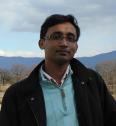Professor Dr Mohammaad Rahmatullah is a professor and Pro Vice-Chancellor of the University of Development Alternative, Dhaka, Bangladesh. He has rich research and teaching career at home and abroad. Md Nurunnabi has talked with him on behalf of Scientific Bangladesh so that wider community can know this great researcher and be benefitted.
Scientific Bangladesh: What would you like to say about your Study, research, profession and awards?
Professor Rahmatullah: I attended St. Gregory’s High School, Dhaka from 1958 till 1967 and obtained my Secondary School Certificate in 1967. Following that, I attended Dhaka Government College and obtained my Higher Secondary Certificate in 1969. I obtained my Bachelor in Science (Honors) in Biochemistry from Dhaka University in 1974, and my Master in Science (Thesis) in Biochemistry from the same Department and University in 1976. I then joined the Department of Biochemistry, Dhaka University in 1976 as Lecturer. I obtained a Commonwealth Scholarship in 1978, under which program I attended the Department of Biochemistry, University of Hong Kong and received my PhD degree in 1982. From 1982 till 1989, I received a Postdoctoral Fellowship from the Department of Biochemistry, Kansas State University, USA and served in that University. Following that, I joined Auburn University, the USA as Research Fellow and pursued my research at this University from 1989 till 1992. Following this period, I joined Weis Center for Research at Pennsylvania, the USA in 1992 as Research Scientist I (equivalent to Assistant Professor). I was promoted to Research Scientist II (equivalent to Associate Professor in 1996) and served Weis Center for Research till 2000. In 2000, I came back to Bangladesh and joined Khulna University, where I served as Dean, Faculty of Life Sciences till 2002. In April 2002, I joined the University of Development Alternative as Dean, Faculty of Life Sciences and since 2008, I am continuing there both as Dean, Faculty of Life Sciences as well as Pro-Vice-Chancellor.
Scientific Bangladesh: Your research achievements and trend of research from Biological chemistry to ethnology/ethnobotany.
Professor Rahmatullah: At Dhaka University, my research centred on the effect of pesticides on growth and fermentation processes in Aspergillus niger. From 1978 till 1982, I worked on the kinetics and assay of the enzyme ornithine carbamoyltransferase, which led to the establishment of two new analytical protocols for the determination of citrulline and urea, and elucidation of the kinetic mechanism of this enzyme. From 1982 till 1992, I worked on the structure and regulation of pyruvate dehydrogenase complex in mammalian systems, which led to the discovery of a new sub-unit of this macromolecular complex enzyme. At Auburn University, I was also involved in research work on kinases in Candida lipolytica, which led to the isolation and purification of a novel kinase from this fungus. At the University of Development Alternative, my research program has been multi-dimensional. I felt that there was a serious shortage of information on the medicinal plants and traditional medicinal practices of the country. So I developed a three-pronged approach: an ethnomedicinal survey of traditional and tribal medicinal practitioners, pharmacological verification in the laboratory of claims made by the traditional and tribal healers on the medicinal uses of any given plant, and finally, clonal propagation of endangered medicinal plant species.
Scientific Bangladesh: You passed such a long time in the USA and did excellent research in Biochemistry, would you please share your research findings at that time in brief?
Professor Rahmatullah: My initial research in the USA was on the structure and regulation of the pyruvate dehydrogenase complex and which led to the isolation of a new sub-unit of this enzyme. Later on at the Weis Center for Research, I worked on the interactions between alpha and gamma subunits of G-proteins and showed that the two subunits can interact with each other in the absence of the beta subunit. This research continued from 1992 till 1996. From 1996, I worked on the regulation of cell division in Schwann cells and showed that cell division in Schwann cells occurs through activation of the MAP kinase and protein kinase A pathways and involves the transcriptional factor CREB.
Scientific Bangladesh: At the same time you are an academician, scientist and also playing a vital role as one of the administrators of your institute. Which part of your job is more important for you and why?
Professor Rahmatullah: I have always stressed the importance of all three parts. Without good administration, any institution cannot function properly. But at the same time, excellent teaching is required to develop young minds and train them up to become good workers and citizens in the future. Research is important as no University can establish itself to be a leader in the field based on teaching and administration only. Research work and publication in international scientific journals lead the institution to be recognized by the international scientific community and helps bring in research support and collaborative agreements.
Scientific Bangladesh: You have returned to Bangladesh with a dream and continuing your research from the very beginning. Would you please share your research achievement in Bangladesh?
Professor Rahmatullah: At the moment, we have perhaps the biggest database on medicinal plants in Bangladesh. My research group and I have published nearly 300 papers in various international scientific journals of repute. At the same time, my research group and I have participated and presented our research findings in over 150 international conferences. I think that our biggest achievement has been to demonstrate to the world that medicinal plants and traditional medicinal practices in Bangladesh have considerable potential for further scientific research leading to the discovery of newer and more efficacious drugs.
Scientific Bangladesh: You have guided more than hundreds of students to complete their thesis and supervised a big group. What is your opinion about these young researchers?
Professor Rahmatullah: My experience is that Bangladesh students have a lot of potentials and are possibly second to none compared with their peers in even developed countries. They have strong determination and an intense urge for advanced studies and research. Under proper guidance, they can easily become future Nobel laureates and distinguished academicians and researchers.
Scientific Bangladesh: We have found several of your articles published collaboratively with Japan, USA, UK and Korean research groups. Is it because of their interest in your research fields and natural resources of Bangladesh? Please tell in brief about your international collaboration.
Professor Rahmatullah: Plants have always been a rich source for new drugs. There are over 250,000 plant species in the world and each plant produces hundreds of phytochemicals, each phytochemical having its own unique bio-active properties. With the advent of allopathic medicine and the emergence of synthetic drugs, many scientists for the last few decades lost interest in medicinal plant research. However, many such synthetic drugs have serious side-effects or have developed drug-resistant vectors. As a result, there has been renewed interest in plants as a source of better drugs and many new drugs have resulted from close observations of indigenous medicinal practices. My research, which can be properly labelled as Natural Products and Drug Discovery, has led to the recognition of the plant diversity of Bangladesh and unique medicinal properties of various local plant species. This, in turn, has attracted the attention of international scientists, and I now have ongoing research collaboration with eminent scientists in the USA, UK, Japan and South Korea.
Scientific Bangladesh: How do you manage the fund to do research and publication?
Professor Rahmatullah: Some funds are obtained locally but funding has always been a problem. As a result, research and publication funding is totally borne by me and my co-researchers.
Scientific Bangladesh: How many articles are published by your groups and which one is your best paper in your opinion?
Professor Rahmatullah: On average we publish around 50 papers per year in PubMed and/or SCOPUS abstracted scientific journals. In my opinion, one of my best papers is the following:
Mohammed Rahmatullah, Umma Ayman, Fatema Akter, Mridul Sarker, Rolee Sifa, Bijoy Sarker, Humayra Naj Chyti, Farhana Ishrat Jahan, Majeedul H. Chowdhury & Soheli A. Chowdhury (2013) Medicinal formulations of a Kanda tribal healer – a tribe on the verge of disappearance in Bangladesh. African Journal of Traditional, Complementary and Alternative Medicines, 10(2): 213-222.
This paper uses a de-replicative approach to analyze the results of an ethnomedicinal survey of the Kanda tribe. This is a new type of analytical approach to analyze ethnomedicinal data and I am very pleased with this approach and this paper.
Scientific Bangladesh: Till Bangladesh is far behind compared to the developed countries with respect to research and development. What is the main obstacle in this situation?
Professor Rahmatullah: The major problem is lack of public consciousness about the benefits of research. Once public awareness is raised, I believe that both the public as well as the private sector will approach researchers, and there will be a fruitful collaboration between Universities, industries, and the Government, which can be beneficial to the people of Bangladesh.
Scientific Bangladesh: How can your research findings be applied in our industries and do you have any plan for this in future?
Professor Rahmatullah: As mentioned earlier, I have possibly the biggest database on medicinal plants and their traditional uses in Bangladesh. This knowledge can be very useful in developing both herbal as well as allopathic drugs. I do have hopes that in the future, the pharmaceutical sector of Bangladesh will become cognizant of my research findings and take a keen interest in developing both herbal drugs, as well as isolating and identifying relevant bio-active components from medicinal plants and marketing them as allopathic drugs following appropriate clinical trials. To conclude, Bangladesh has tremendous potential in the availability of raw materials and adequately trained personnel to develop especially the herbal sector, and I think that this sector will see immense advances in the very near future.
Scientific Bangladesh: Thank you very much for your time and sharing your experience with our readers
Professor Rahmatullah: Thanks Scientific Bangladesh for asking me questions and giving scope to introduce myself, my research and thoughts


